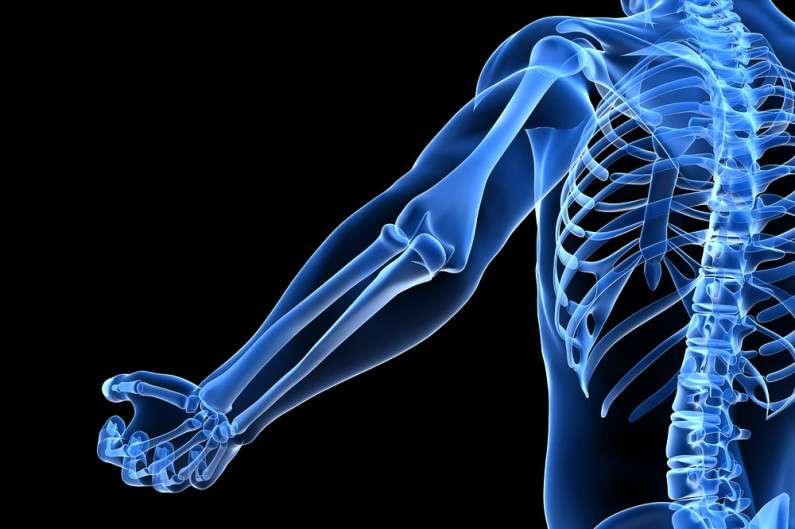Researchers improve understanding of 'Silly Putty' protein that could improve bioengineered tissues

Collagen is an essential protein for living tissue. It forms the stiff scaffolding that provides structure and stability for tissues and the cells within them. It is also nature's packaging material, imbued with qualities that allow it to support and cushion cells, miraculously alternating between states of moderate elasticity and quasi-fluidity, depending on the physical forces acting upon it.
These seemingly contradictory characteristics – stiff or semi-fluid as circumstances demand – make collagen viscoelastic, similar to Silly Putty.
Now, a group of Stanford researchers have learned how the protein transitions between these properties. Writing in the Proceedings of the National Academy of Sciences, the researchers report that the stiffer collagen networks become in response to a deformation, the more quickly they relax viscously.
The researchers think that this insight could lead to new techniques for bioengineering tissue for regenerative medicine. By targeting mechanical forces acting upon cells, scientists might be able to encourage them to grow in particular ways to, for instance, heal wounds or replace tissues carved away during surgery.
"People tend to think that cells only respond to chemical cues," said Ovijit Chaudhuri, an assistant professor of mechanical engineering at Stanford. "But they are also exquisitely sensitive to mechanical cues, to the relative stiffness of the collagen networks that surround many cells, for example."
Chaudhuri applies this physical-force perspective to a truly interdisciplinary effort – investigating how the mechanics of the tissue affect breast cancer progression and how the mechanical properties of biomaterials can be engineered to promote tissue regeneration by cells.
"It has been found that enhanced tissue stiffness promotes breast cancer progression and that altered stiffness can even cue stem cells to differentiate in certain ways," Chaudhuri said. "We're learning that the mechanics of the microenvironment, mediated through the physical forces cells exert on the microenvironment, play major roles in cell function."
The researchers investigated the mechanics of collagen networks through traditional mechanical testing, computational modeling, and using atomic force microscopy to apply force at the molecular scale.
Their key finding is that the degree of deformation exerted on collagen is directly related to the subsequent viscoelastic response: More deformation on the collagen – technically, more strain-stiffening – results in accelerated viscoelasticity as the collagen reverts to a relaxed state.
Collagen biopolymers are "cross-linked," meaning they are connected like the strands of a fishing net, said co-author Sungmin Nam, a mechanical engineering graduate student.
"These cross-links, however, are not always particularly strong, and can be quite weak," Nam said. "Our work suggests that these weak cross-links exhibit force-dependent unbinding. In other words, the greater the force on the cross-links, the quicker they unbind. So the more force on the collagen in general, the quicker you'll see a subsequent relaxation."
Cell behaviors are deeply influenced by mechanical properties, so the research implicates that the distinctive mechanics of collagen could play a major role in regulating cell behaviors. Nam said this improved understanding of collagen's varying elastic and viscoelastic qualities have significant implications for regenerative medical research.
"We know that cells interact strongly with their microenvironments, and that (collagen) polymers affect these microenvironments through strain-stiffening and viscoelasticity," Nam said. "As we gain insights into cell-collagen interactions, it could help us develop new techniques for 3D cell culture and tissue regeneration."
Chaudhuri is an associate member of the Stanford Cancer Institute and a member of Bio-X, ChEM-H, and the Stanford Biophysics Program. His coauthors on the study include Manish J. Butte, an assistant professor of pediatrics at the Stanford School of Medicine, and Kenneth H. Hu, a Stanford graduate student in biophysics.
Research was supported by the Jeongsong Cultural Foundation and Samsung Scholarship for S.N., the NIH/NIGMS, and grants from the Stanford Child Health Research Institute and DARPA.
The study, titled "Strain-Enhanced Stress Relaxation Impacts Nonlinear Elasticity in Collagen Gels," is published in the Proceedings of the National Academy of Sciences, on May 2, 2016.
More information: Sungmin Nam et al. Strain-enhanced stress relaxation impacts nonlinear elasticity in collagen gels, Proceedings of the National Academy of Sciences (2016). DOI: 10.1073/pnas.1523906113
Journal information: Proceedings of the National Academy of Sciences
Provided by Stanford University


















